Table of Contents
Plasma Membrane Diagram, Plasma Membrane Structure, Models and Plasma Membrane Functions
In this article we will discuss about plasma membrane diagram, plasma membrane structure, models and Plasma Membrane functions
Plasma Membrane Definition
The plasma membrane, also known as cell membrane. It is a thin, semi-permeable membrane that surrounds every living cell. It separates the inner part of cell from the external environment, protecting the cell’s contents and regulating the flow of materials into and out of the cell.
Plasma Membrane Diagram
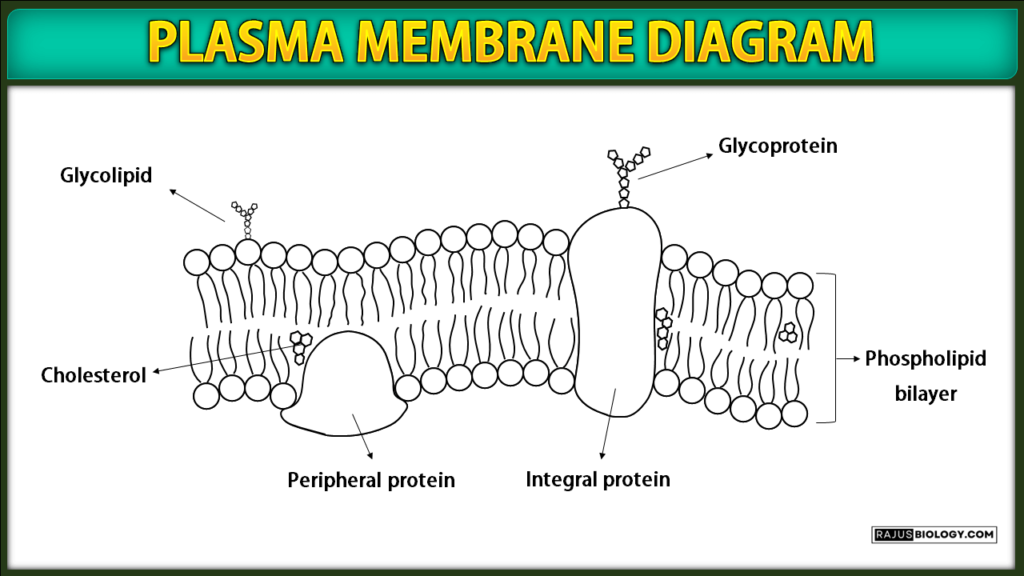
Plasma Membrane Structure
The plasma membrane structure is made up of following parts:-
Phospholipid Bilayer:
- The phospholipid bilayer is the main structural component of the plasma membrane.
- It is made up of two layers of phospholipid molecules and arranged in a two layer.
- Each phospholipid molecule is composed of a hydrophilic (water loving) head and two hydrophobic (water repelling) tails.
- The hydrophilic heads face outward toward the watery environments inside and outside the cell, while the hydrophobic tails face inward, creating a hydrophobic core.
- This arrangement of phospholipids provides a barrier that controls the passage of substances in and out of the cell.
Integral Protein:
- Integral proteins are proteins embedded in the phospholipid bilayer.
- These proteins cover the entire width of the membrane.
- They contain hydrophobic regions that interact with the hydrophobic tails of phospholipids, anchoring them to the membrane.
- These proteins perform a variety of functions, including transporting molecules and ions across the membrane, acting as channels or pumps, and participating in cell signalling and recognition.
Peripheral Protein:
- Peripheral proteins are proteins which are loosely attached to the plasma membrane surface.
- Compared to integral proteins, they don’t cover the entire membrane and are not embedded in the phospholipid bilayer.
- Instead, they associate with either the cytoplasmic or extracellular sides of the membrane, frequently interacting with essential proteins or other cell components.
- Peripheral proteins play a variety of roles, including cell signalling, enzymatic activity, and structural support.
Cholesterol:
- Cholesterol is a lipid molecule found in the plasma membrane.
- It is found between the phospholipids in the lipid bilayer.
- Cholesterol supports the fluidity and stability of the plasma membrane. It acts as a buffer, preventing phospholipids from packing too tightly at low temperatures and reducing membrane fluidity.
- At high temperatures, cholesterol helps to stabilise the membrane by limiting the movement of phospholipids and preventing excess fluidity.
- Overall, cholesterol helps the plasma membrane function properly and maintain its structural integrity.
Glycolipid:
- Glycolipids are lipids with carbohydrate chains attached.
- They are found in the plasma membrane’s outer side, with carbohydrate chains that extend into the extracellular space.
- Glycolipids help to cell recognition and interaction.
- They serve as cell identification markers and play a role in immune response and cell adhesion.
Glycoprotein:
- Glycoproteins are proteins with carbohydrate chains attached to them.
- The carbohydrate chains extending outside the cell. Glycoproteins also help in cell recognition and interaction.
- They are mainly help for cell signalling, immune response, and cell adhesion.
- Glycoproteins can function as receptors for specific molecules or as antigens, causing an immune response.
- They contribute to the diversity and specificity of cell-to-cell interactions and are required for a variety of cellular functions.
Models of Plasma Membrane
There are numerous hypotheses proposed to describe the structure of the plasma membrane. Here an explanation of the four models of the plasma membrane.
Lipid Bilayer Model
- In this model, plasma membrane is composed of up of two layers of phospholipid molecules.
- Phospholipids are amphipathic molecules, with hydrophilic heads (water-loving) and hydrophobic tails (water-repelling).
- The hydrophilic heads face the watery extracellular and intracellular environments, whereas the hydrophobic tails are folded inward, forming a barrier between the two compartments.
- This lipid bilayer serves as the plasma membrane’s basic structure and functions as a selectively permeable barrier, regulating the movement of molecules into and out of the cell.
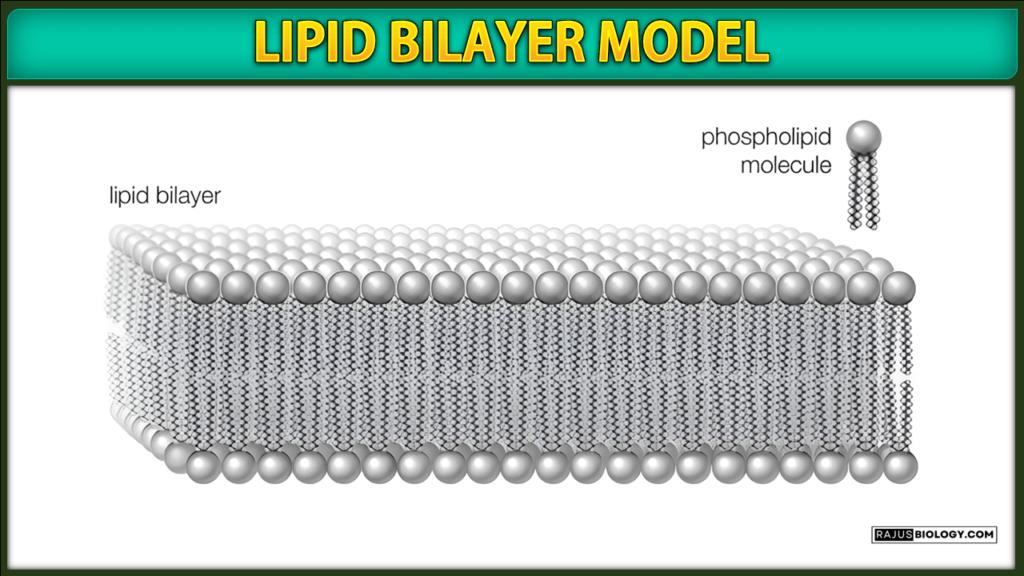
Sandwich Model (Davson-Danielli Model)
- The sandwich model, proposed by Davson and Danielli in the 1930s.
- The plasma membrane is a sandwich-like structure with protein layers on both sides of the lipid bilayer.
- The lipid bilayer is surrounded by two protein layers, known as the protein coat.
- These protein layers were thought to provide structural support and stability for the membrane.
- However, further studies revealed that this model was incorrect because it did not account for the fluidity of the plasma membrane or the presence of integral membrane proteins.
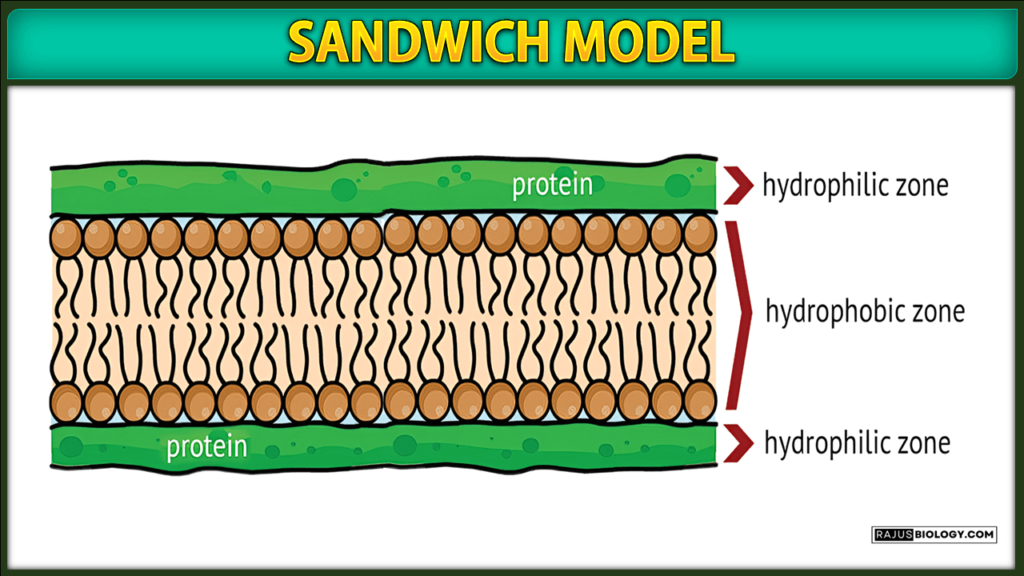
Unit Membrane Model
- J.D. Robertson proposed the unit membrane model in the 1950s, and these describes the plasma membrane as a trilaminar structure made up of three layers
- Two dense outer layers and one inner layer. The outer layers were thought to be protein layers, while the inner layers were made of lipid bilayers.
- This model improved on the sandwich model by recognising the presence of the lipid bilayer.
- However, it failed to convey the complexity and diversity of the membrane’s protein components.
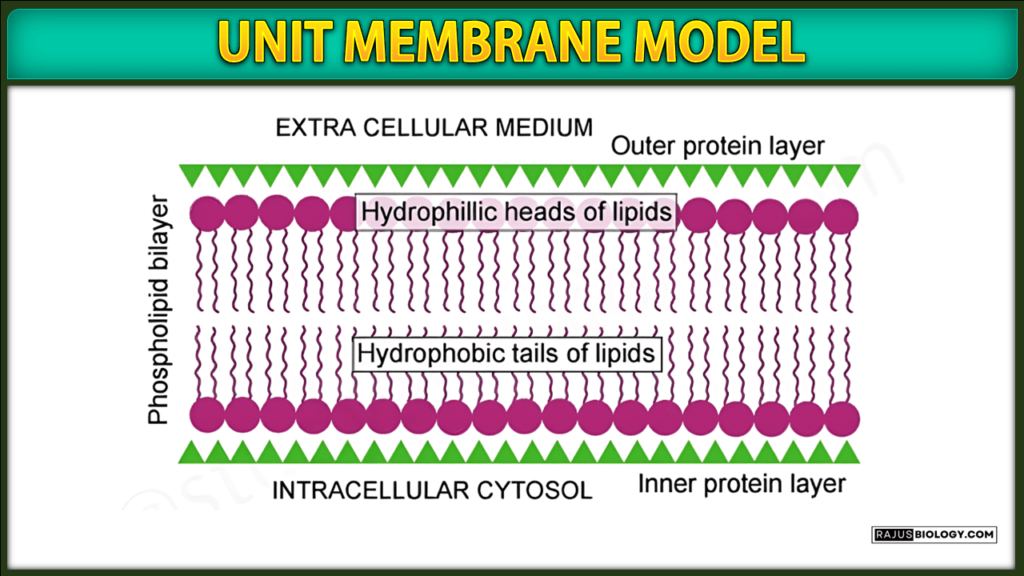
Fluid Mosaic Model
- The fluid mosaic model, proposed by Singer and Nicolson in 1972. It is the most widely accepted model of the plasma membrane.
- According to this model, the plasma membrane is made up of a lipid bilayer with embedded proteins arranged in a mosaic pattern.
- The lipid bilayer is made up of phospholipids and its give membrane fluidity.
- Integral membrane proteins are embedded in the lipid bilayer, whereas peripheral membrane proteins are loosely attached to either the inner or outer surface of the membrane.
- This fluid mosaic model highlights the membrane’s fluidity, as proteins can move laterally within the lipid bilayer.
- It also recognises the diversity and functional significance of the membrane’s various proteins, including transporters, receptors, and enzymes.
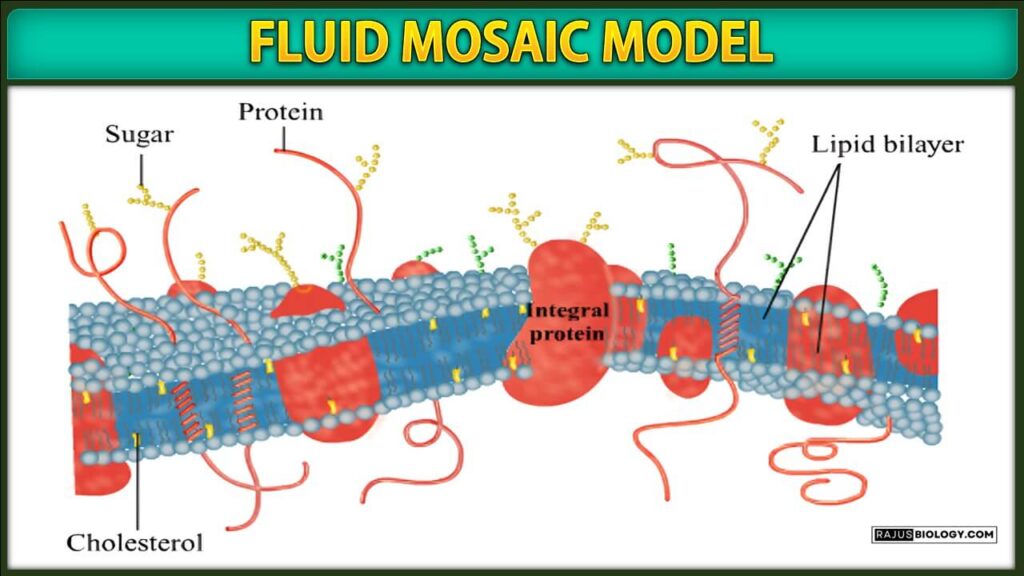
The fluid mosaic model is currently the most accurate representation of the plasma membrane, keeping in mind its dynamic nature, lipid bilayer structure, and the wide range of proteins that contribute to its functionality.
Plasma Membrane Functions
The plasma membrane or cell membrane performs a variety of functions that are need for functioning of a cell. Here are the main plasma membrane functions:
Selective Permeability
- The plasma membrane has selective permeability, which means that certain substances can pass through the plasma membrane while others can’t.
- This property of cell membrane is necessary for cellular homeostasis.
- Small, nonpolar molecules like oxygen and carbon dioxide are able to move freely across the membrane, whereas larger molecules and ions require specialised transport systems.
- Integral proteins embedded in the membrane help in the transport of molecules and ions via the processes such as passive diffusion, facilitated diffusion, and active transport.
Cell Signalling
- The plasma membrane plays a role in cell signalling, which allows cells to communicate and respond to external stimuli.
- They contains receptors that can bind to specific signalling molecules like hormones and growth factors.
- Binding of these molecules to the receptor initiates a chain reaction of intracellular events that result in cellular responses.
- Examples include ligand-receptor interactions, signal transduction pathway activation, and gene expression modulation.
Barrier and compartmentalization
- The plasma membrane serves as a physical barrier, separating the cells internal environment from the external environment.
- This compartmentalization facilitates the organisation of cellular processes while preventing interference between different metabolic pathways.
- In eukaryotic cells, the plasma membrane encloses a variety of membrane-bound organelles, including the nucleus, mitochondria, and endoplasmic reticulum, each with their own distinct functions.
Transport of Molecules
- Integral proteins in the plasma membrane help molecules and ions move across it.
- Channel proteins form water-filled pores through which specific ions, such as sodium or potassium, can pass down concentration gradients.
- These carrier proteins undergo structural modification and help to transport molecules across the membrane, usually against concentration gradients. Pumps, like the sodium-potassium pump, use energy to actively transport ions across electrochemical gradients.
Cell Adhesion and Communication
- The plasma membrane plays an important role in cell adhesion and communication.
- The plasma membrane contains some proteins like cadherins and integrins.
- These proteins helps adhesion among cells. Mainly cells use these type of adhesion proteins to form tissues and maintain their structure.
- Gap junctions, which are specialised protein channels in the membrane, facilitate direct intercellular communication by allowing small molecules and ions to pass between adjacent cells.
Cell Recognition and Immune Response
- Glycolipids and glycoproteins on the plasma membrane serve as markers for cell recognition and identification.
- They play important role in immune responses by identifying self and non self cells.
- These markers are involved in immune surveillance, tissue development, and communication between cells.
- They also act as pathogen receptors and control immune cell activation and signalling.
Energy Production in Prokaryotes
- Energy production involves the plasma membrane of prokaryotic cells as well as certain organelles such as mitochondria and chloroplasts.
- These membranes contain ETC components as well as ATP synthase. So, they generates ATP through cellular respiration and photosynthesis.
- The plasma membrane’s role in energy production ensures a steady supply of ATP, which is the primary energy source for cellular activity.

FAQs
What is a plasma membrane?
The living cells are surrounded by flexible, thin layer known as the plasma membrane or cell membrane. The plasma membrane separates intracellular environment from the extracellular environment and forming a barrier. They help for exchange of molecules and communication between cells.
What is the function of cholesterol in the plasma membrane?
Cholesterol helps maintain the fluidity and flexibility of the plasma membrane. It also help for proper functioning of the membrane
Why is the plasma membrane called a selectively permeable membrane?
The plasma membrane is a selectively permeable membrane because it allows certain substances to pass through plasma membrane and restricting the passage of others. It selective permiable controls the transport of molecules and ions into and out of the cell.
What would happen if the plasma membrane ruptures or breakdown?
The rupture or breakdown of the plasma membrane can result in loss of cellular integrity, change in cellular homeostasis and function, increased vulnerability to pathogens and toxins, and activation of inflammatory responses. These consequences may ultimately lead to cellular dysfunction, cell death, and tissue damage.
Who discovered plasma membrane?
The discovery of the plasma membrane is attributed to multiple scientists over a period of time. Here are a few key contributors:
Carl Nageli: In 1855, referred to the outer layer as the cell membrane.
E. Overton: In 1895, proposed the lipid bilayer model, suggesting the membrane was composed of lipids.
Jonathan Singer and Garth Nicolson: In 1972, proposed the fluid mosaic model, which is the current understanding of the membrane’s structure as a dynamic mosaic of lipids and proteins.
What is the composition of plasma membrane?
The plasma membrane is mainly made up of a lipid bilayer and proteins are embedded in the lipid bilayer.
Read More
Cell Biology Notes
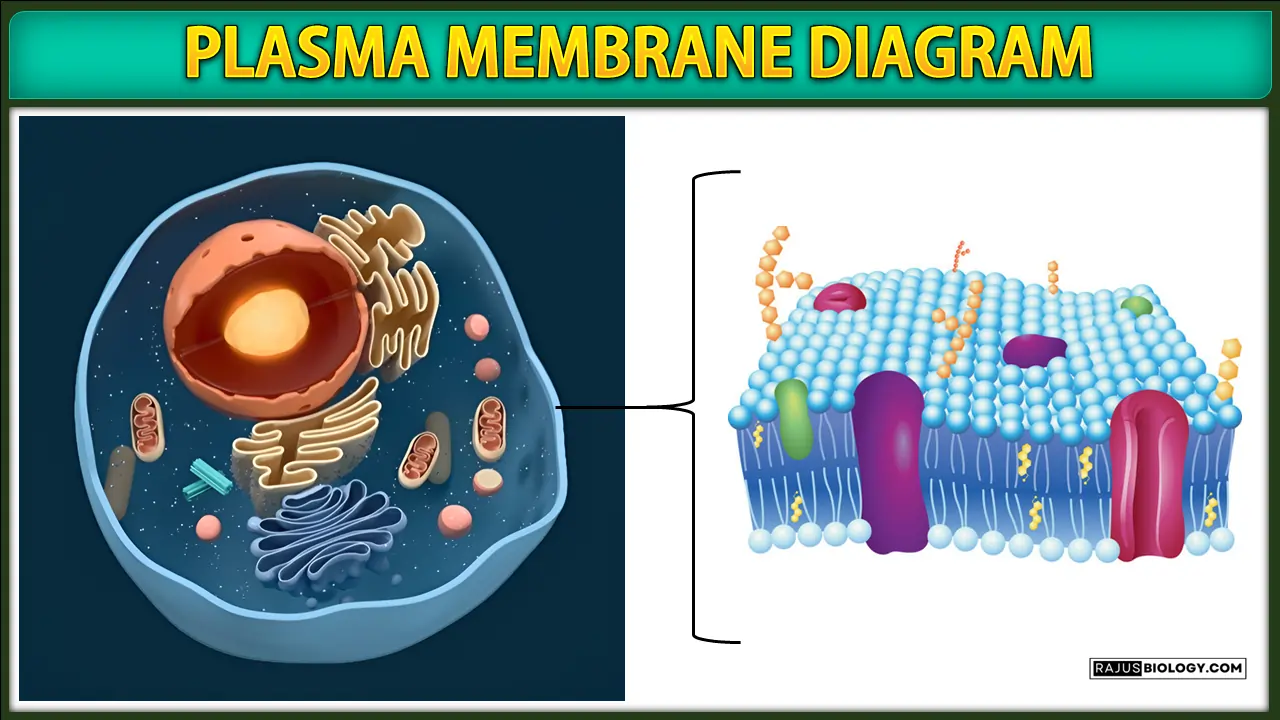


![[PPT] The living world Class 11 Notes](https://rajusbiology.com/wp-content/uploads/2024/06/PPT-The-living-world-Class-11-Notes-300x169.webp)
